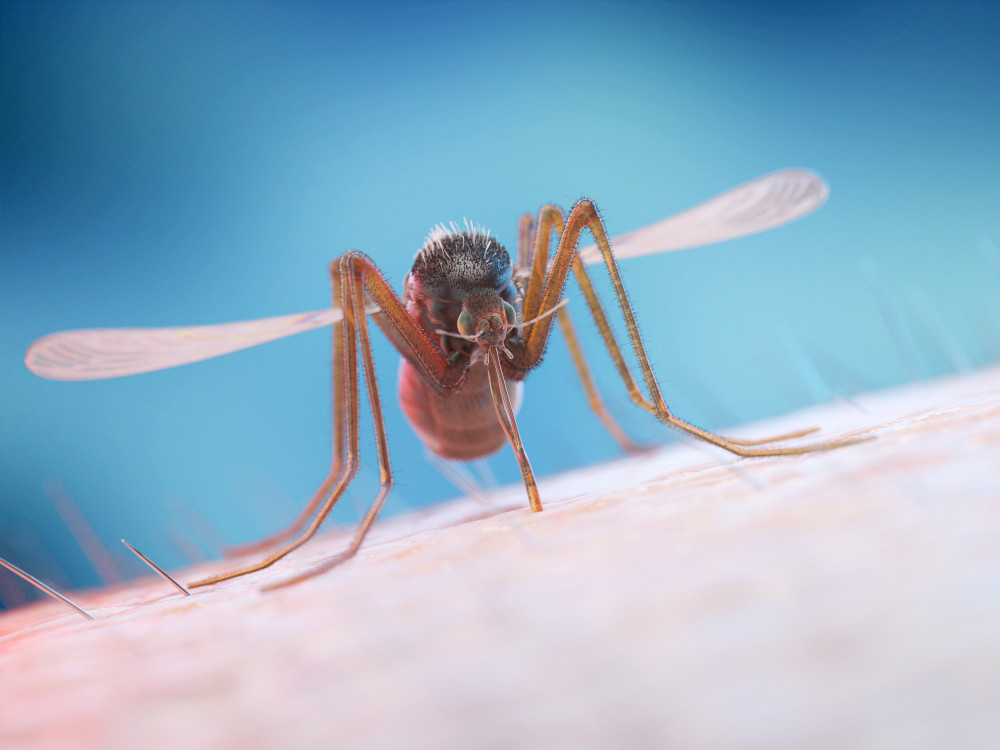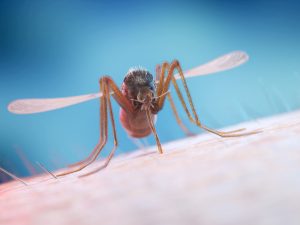
Insects and Allergies
Insect Allergies
 Most insects are harmless and good for the environment. Some, like mosquitoes, inflict painful or irritating bites and spread diseases. Other insects sting and release venom.
Most insects are harmless and good for the environment. Some, like mosquitoes, inflict painful or irritating bites and spread diseases. Other insects sting and release venom.
For most people, insect stings are a short-term annoyance. Others allergic to the venom in a stinging insect can cause an allergic reaction.
Which insects cause allergic reactions?
Yellow jackets
Also called ground bees, yellow jackets are actually part of the wasp family. These black and yellow insects swarm around picnic areas and trash cans, persistent in their search for food and aggressive if you get in their way. From spring to midsummer, they forage for protein (insects or other meat) to feed the larvae in the nest, as well as sweets for themselves and the other adults. By late summer, their numbers peak and they go on a frenzied search for sweets wherever they can find them – especially in your picnic drinks! Yellow jackets build their nests underground or in fallen logs; others nest in the walls of houses. They can sting numerous times, especially if provoked.
Hornets
Hornets are slightly larger than yellow jackets – more the size of a bumble bee but with a defined, narrow waist – and most are black with white or yellow stripes. Though feared because of their size, hornets do not usually sting people unless they are provoked. They are natural predators, killing other insects and even caterpillars to feed the larvae in their nest. Adults eat nectar and fruit pulp. In the spring, the queen will build a small nest the size of a golf ball high in a tree or under the eaves of a building. Workers add layers throughout the summer as more insects are hatched; the nest can become as large as a football, always with the opening facing down.
Paper wasps
Longer and slimmer than bees or hornets, paper wasps drag their long legs behind them as they fly. Their coloring ranges from reddish brown to black, with yellowish rings. Wasps eat other insects and spiders, but will also forage for food in picnic areas and garbage cans. Their habit of building (and defending!) their nests on and around homes and small buildings makes them common garden pests. You can recognize a wasp’s nest by its papier-maché look and its interconnected web of cells, which are homes for the young wasps. Some nests are small, with only a dozen or so wasps; others house up to 100 insects. They often hang from trees or under eaves, and sometimes look like upside-down umbrellas. Some paper wasps build nests inside cavities such as bird boxes.
Bees
Honeybees are fat, dark brown, slightly hairy insects often found hovering around bright flowers or feasting on clover. Found most often in warm climates, these are the bees of folklore that build hives and produce honey. They can only sting once, leaving their stinger behind in the skin, then dying.
Their cousins, the bumble bees, look very similar but will sting more than once if threatened. Bees build their hives in protected areas, such as building cavities, holes in the ground or compost piles. Honeybees will use the same nest year after year, building elaborate honeycombs and living on the stored honey over the winter; bumble bees start new nests each spring. Africanized honeybees – sometimes called killer bees – are a subspecies of honeybees with a reputation of being extremely aggressive. Like the honeybee, they can sting only once, but their hives are so large that they attack in swarms if you get too close. Always get professional help to remove a beehive.
Red ants (or fire ants)
Red (and black) imported fire ants are found throughout southeastern regions of the U.S.; they cannot survive the cold winters of the north. There are many varieties of fire ants that can cause allergic reactions, but the imported ones tend to be more aggressive than the natives and will bite and sting repeatedly. The easiest way to identify fire ants is to recognize their nests. These are
large, dome-shaped mounds of crumbly earth up to 18 inches across and 8-12 inches high. Since the ants come and go through underground tunnels, the mounds do not have visible openings like traditional ant mounds. However, if you step on the nest, the ants will quickly swarm up onto your feet and legs. If you live in fire ant country, be careful walking in grassy areas. Fire ants can also be identified by their size. Most domestic ants, including stinging red ants (red harvester), are fairly uniform in size, while fire ants vary from 1/16 to 1/4 inch.
What are symptoms of insect allergy?
Symptoms of an insect venom allergy can range from a mild local reaction to a severe systemic reaction known as anaphylaxis. The danger is that an allergic reaction can happen to anyone, even people with no other allergies and people who have been stung before with no problems.
Local reaction
Since most people are not allergic to stings, the most common reaction is swelling, pain and itching centered around the site of the sting. This is your body’s response to the irritating enzymes and chemicals in the insect’s venom. This is normal and it is not an allergic reaction. Cold compresses or ice is the best treatment, along with antihistamines or calamine lotion to control itching.
Systemic (whole body) reaction
An allergic reaction will set off symptoms in other parts of the body, away from the sting. This is called a systemic, or whole body, reaction. The most common symptoms are skin-related, such as hives (a raised, itchy rash) or deep swelling.
Anaphylaxis
Anaphylaxis is a life-threatening allergic reaction that spreads quickly through the body, sometimes resulting in a sudden drop in blood pressure and loss of consciousness. Early symptoms include hives, swelling in the mouth and throat, dizziness, difficulty breathing (especially people with asthma), headache, nausea or vomiting. These symptoms require immediate medical attention. If you have an epinephrine auto-injector, use it right away.
Insect sting symptoms usually occur quickly, sometimes within 10 minutes. The sooner you receive treatment, the more likely the symptoms are to improve. Because it’s impossible to predict whether symptoms will progress from mild to life-threatening, it’s safer to immediately administer epinephrine than to wait to see what happens. Always follow up with medical care: Insect sting anaphylaxis is long-lasting and can come back after the epinephrine wears off (after 30 minutes)
Download Our Free “Understanding Anaphylaxis” Guide
What do you do for an insect sting?
- Flick the insect away from your
- Walk (don’t run) away from the Some insects will be threatened by quick movements and running may increase your body’s absorption of the venom.
- If a stinger is left in the skin (the telltale mark of a honeybee), scrape it off with a flat surface, like a credit card; do not use tweezers or your fingertips, as that could squeeze more venom into the sting area.
- Apply ice to reduce
- Expect local redness and
- Watch for these symptoms indicating an anaphylactic reaction:
- Hives or generalized itching other than at the site of the sting
- Swelling of the throat or tongue
- Difficulty breathing
- Dizziness
- Severe headache
- Stomach cramps, nausea or diarrhea
Information from: Allergy & Asthma Network website, https://allergyasthmanetwork.org/allergies/mold-allergy/
You may also like

Top 9 Food Allergens

What are the most common allergies

